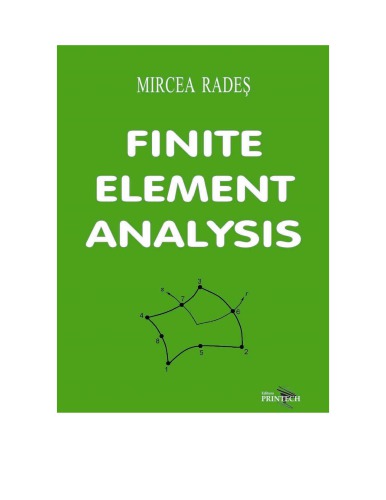Product desciption
Finite Element Analysis Mircea Rades by Mircea Rades 9789737185860, 9737185862 instant download after payment.
This textbook represents the Finite Element Analysis lecture course given to students in the third year at the Department of Engineering Sciences (now F.I.L.S.), English Stream, University Politehnica of Bucharest, since 1992.
It grew in time along with a course taught in Romanian to students in the Faculty of Transports, helped by the emergence of microcomputer networks and integration of the object into mechanical engineering curricula. The syllabus of the 28-hour course, supplemented by 28-hour tutorial and lab. classes, was structured along the NAFEMS recommendations published in the October 1988 issue of BENCHmark. The course represents only an introduction to the finite element analysis, for which we wrote simple stand-alone single-element programs to assist students in solving problems as homework. It is followed by an advanced course in the fourth year at F.I.L.S., called Computational Structural Mechanics, where students are supposed to use commercial programs.
In designing the course, our aim was to produce students capable of: (a) understanding the theoretical background, (b) appreciating the structure of finite element programs for potential amendment and development, © running packages and assessing their limitations, (d) taking a detached view in checking output, and (e) understanding failure messages and finding ways of rectifying the errors.
The course syllabus was restricted to 2D linear elastic structural problems. It has been found advantageous to divide the finite element analysis into two parts. Firstly, the assembly process without any approximations (illustrated by frameworks) followed by the true finite element process which involves approximations. This is achieved starting with trusses, then with beams and plane frames, and progressively dealing with membrane and plate-bending elements. Solid elements and shells are not treated. Our objective was to ensure that students have achieved: (a) a familiarity in working with matrix methods and developing stiffness matrices, (b) an understanding of global versus local coordinate systems, © the abilty to use the minimum potential energy theorem and virtual work equations, (d) the mapping from isoparametric space to real geometrics and the need for numerical integration, (e) an insight in numerical techniques for linear equation solving (Gauss elimination, frontal solvers etc), and (f) the use of equilibrium, compatibility, stress/strain relations and boundary conditions.
As a course taught for non-native speakers, it has been considered useful to reproduce as language patterns some sentences from English texts.


